Some plants get all the attention, with their massive flowers or bold foliage colors. Then there are the humble workhorses doing their job without any fuss or muss, making our lives easier and our gardens prettier.
Sedges are one such plant. For the most part, they’re nearly maintenance-free, and they can grow in areas where other plants would simply wither and die.
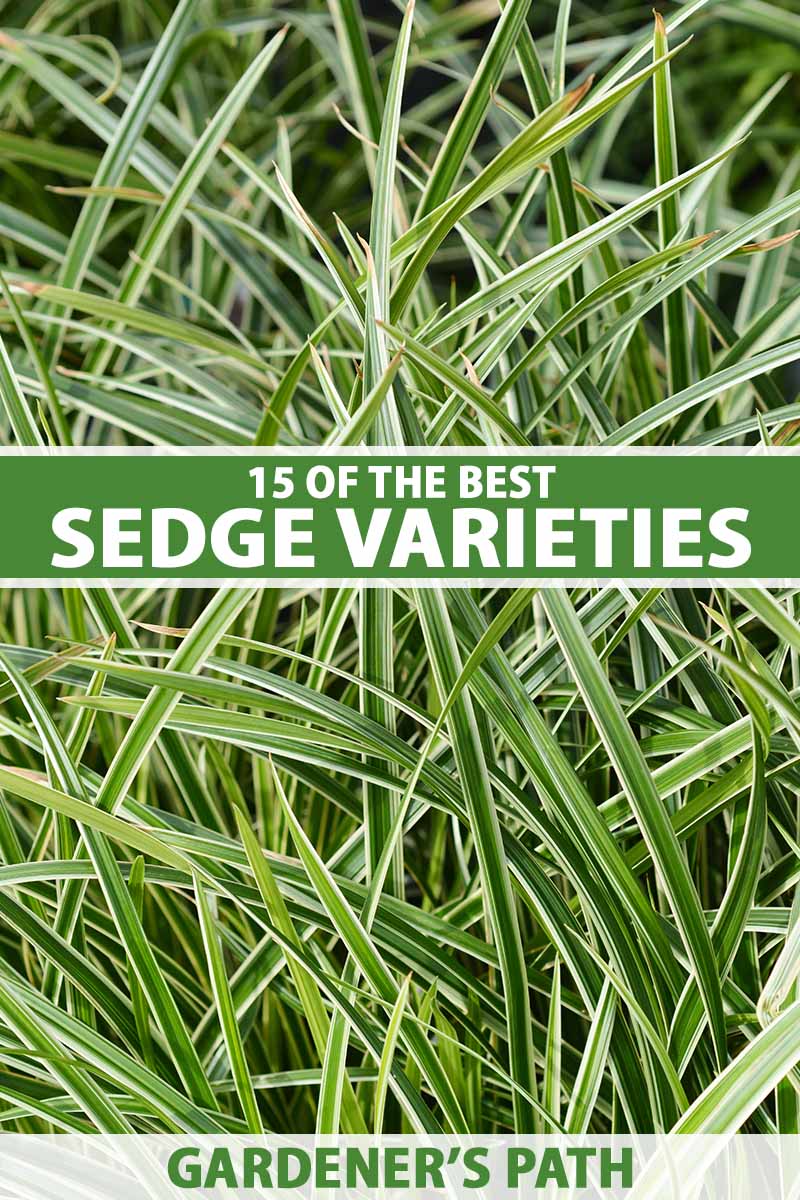
We link to vendors to help you find relevant products. If you buy from one of our links, we may earn a commission.
True sedges, those plants in the Carex genus, generally do well in wet or depleted soils and are perfectly happy with the barest amount of sunlight. Some are even perfect as a lawn replacement for those shady spots where grass won’t grow.
There are dozens of sedges out there to choose from, but who has the time to figure out how they all differ from each other and which are best?
Well, we did the legwork for you and narrowed things down to 15 perfect options! Here are the varieties we’ll go over in this guide:
15 of the Best Sedges for the Home Garden
“True sedges” are those in the Carex genus, as we mentioned. But if you want to know about other genera, read our sedge growing guide.
There are many fantastic Carex cultivars and hybrids out there, and these are often what you’ll see at nurseries. Species plants can also make wonderful additions to the garden, and some of these are native varieties.
The most common cultivated Carex sedges are Japanese (C. morrowii) and New Zealand (C. testacea, C. buchananii, and C. comans).
Also look for pond (C. riparia), black (C. nigra), tawny (C. hostiana), brown bog (C. buxbaumii), spring (C. caryophyllea), and pendulous (C. pendula) sedges. EverColor® is the most popular series.
Now, let’s take a look at these top picks!
1. Everest
EverColor® ‘Everest,’ a C. oshimensis cultivar, features distinctly variegated dark green and cream leaves in a fountain-like growth habit. It thrives in full or part shade and prefers moist soil.
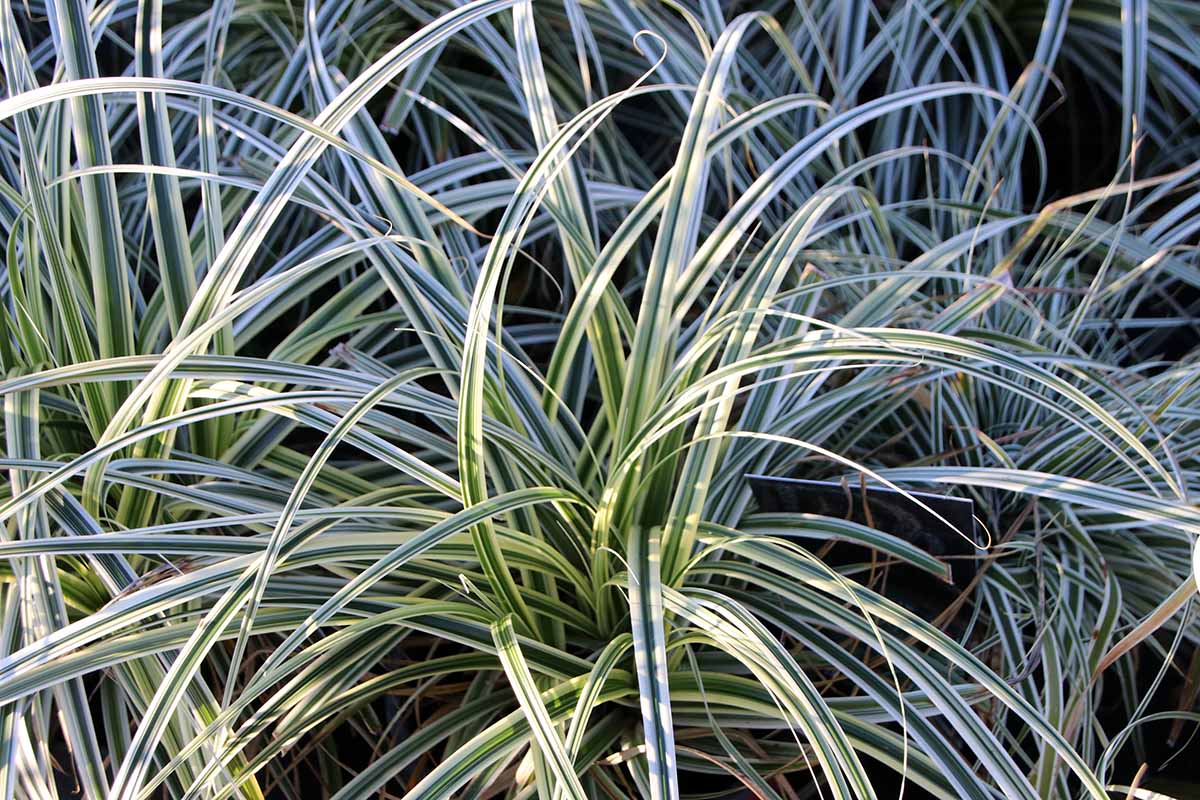
This is one of the most popular cultivars and you can find it just about anywhere for growing in Zones 5 to 9. It reaches about 18 inches tall and wide.
Shopping online? You can pick up one at Nature Hills Nursery in a #1 container.
2. Everillo
If you like the idea of adding some bold color to the shady areas of your garden, C. oshimensis ‘Everillo’ has neon lime yellow and green foliage on narrow leaves.
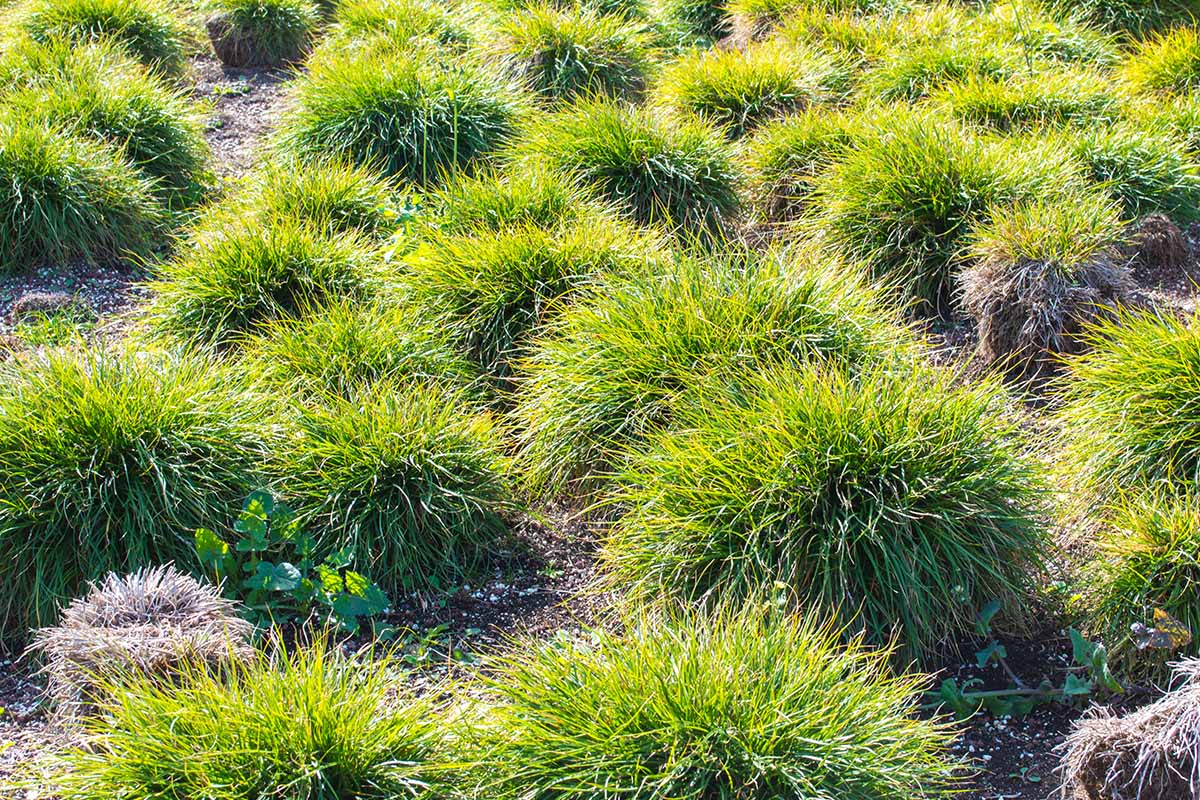
They dance around in the breeze like vibrant ribbons, grabbing attention wherever you place them.
Speaking of, at under 18 inches tall and wide with a clumping growth habit, this cultivar does well under trees, in containers, or as a border plant. Grow it in Zones 5 to 9.
Home Depot sells this standout in two-and-a-half-quart containers.
3. Everglow
‘Everglow’ from the EverColor® series is a C. morrowii cultivar with orange and green striped foliage and spiky brown seed heads. It’s another wildly popular cultivar thanks to its bold look.
Perfect for adding glowing color to shady areas, it grows in Zones 5 to 10 and tops out at about 18 inches tall and wide.
Nature Hills Nursery carries this beauty in a #1 container if it’s calling your name.
4. Evergold
Looking as sharp as a pin-striped suit, C. hachijoensis ‘Evergold’ has creamy yellow and deep green stripes in a compact, mounding, cascading growth habit.
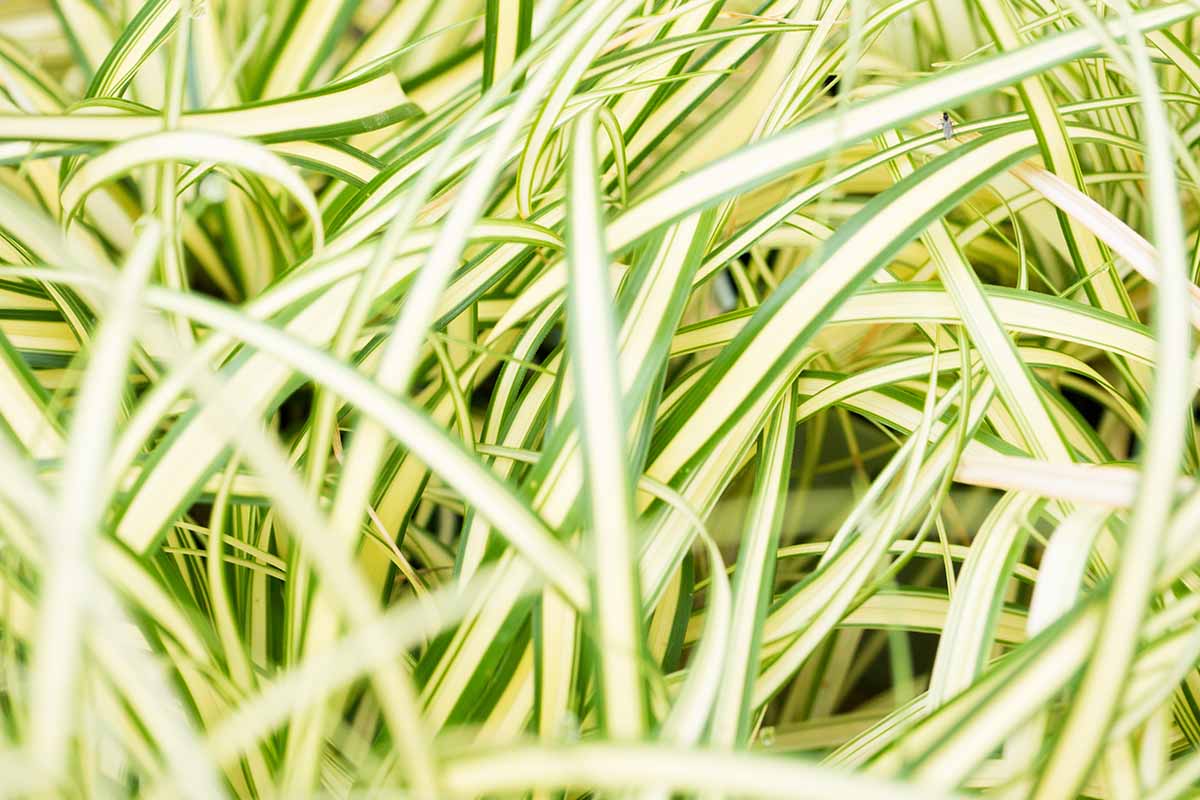
The leaves are semi-evergreen and the plant is perfectly happy in partial shade and wet soil. Rated for Zones 5 to 10, these grow to about a foot and a half tall with a similar width.
Head on over to Nature Hills Nursery to grab one in a #1 container.
5. Feather Falls
With its bright, striped foliage, it’s easy to fall in love with ‘Feather Falls.’ This hybrid features creamy white and green stripes on an 18-inch-tall plant. In spring, it produces feathery flower stems.

This plant fares better in sunnier spots than many Carex cultivars. It’s hardy in Zones 5 to 9.
The gracefully arching leaves look like a tiny white and green waterfall in the garden, and this cultivar can spread up to three feet, with a clumping growth habit. It’s also particularly suited to containers.
Falling in love? Bring this variety home from Burpee.
6. Frosted Curls
C. comans ‘Frosted Curls’ looks like a tuft of muppet hair with silvery-green, narrow leaves that shimmer in the light. It’s topped by purple seed heads in the late summer.
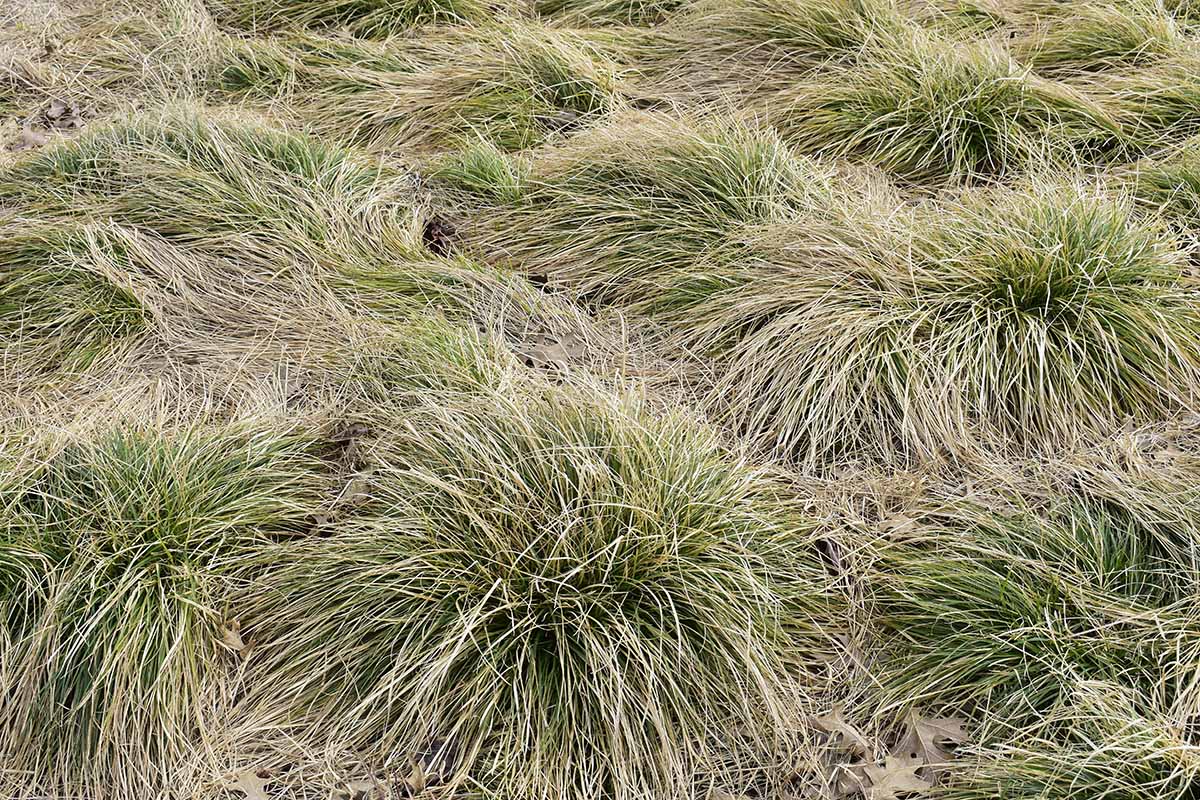
A New Zealand type, this one does best in the heat, and shouldn’t be planted outside of Zones 7 to 11. If you live in the right climate, you’ll be treated to a beautiful display on a two-foot-tall plant. Clumping mounds spread one to two feet.
Once again, Nature Hills Nursery can make this fantastical option a part of your garden with a #1 container.
7. Gray’s
Gray’s sedge (C. grayi) has green spiky seed heads that look like giant burrs but without the annoying habit of clinging to anything they can get their hooks into.
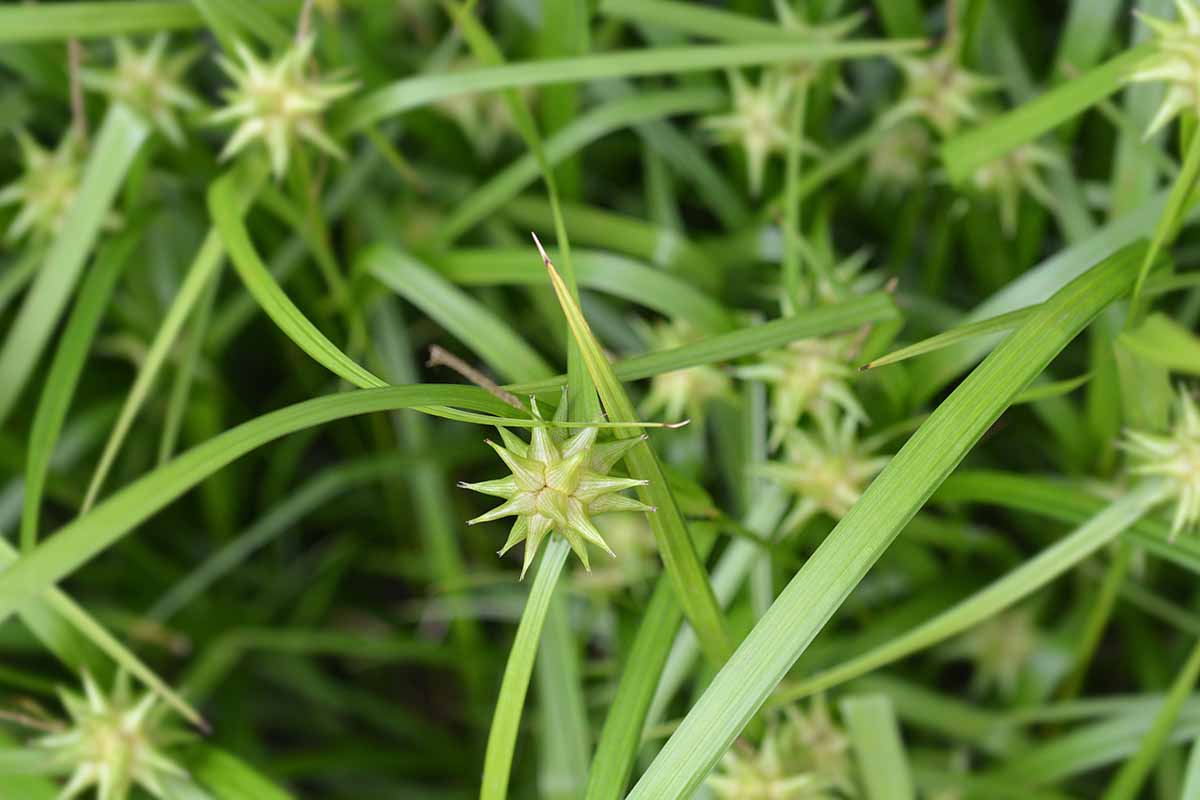
This North American native with bright green, upright foliage grows three feet tall with a spread of one to two feet, and thrives in Zones 5 to 9. It tolerates light shade and needs constantly moist soil.
8. Ice Dance
‘Ice Dance’ is another bicolor C. morrowii cultivar. This one has green leaves with white pinstripes on a two-foot-tall plant. It needs part to full shade, and thrives in Zones 5 to 9.
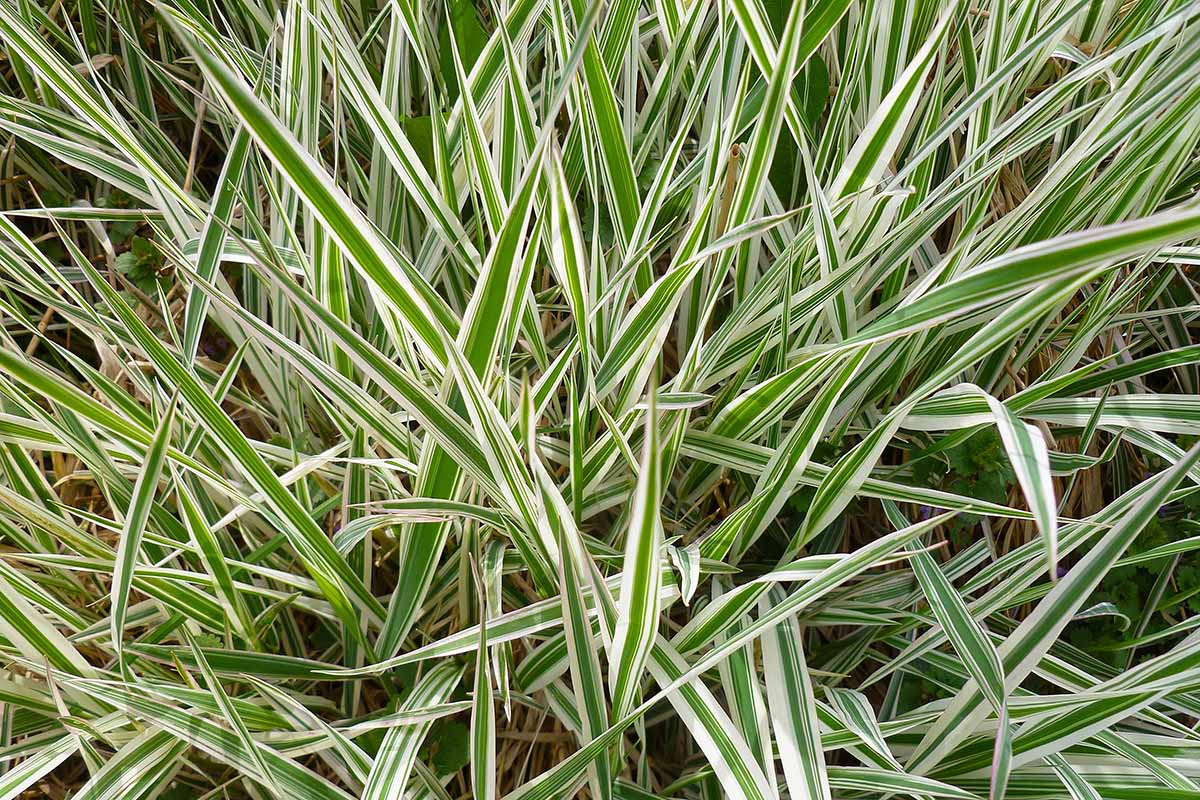
With a clumping growth habit, ‘Ice Dance’ has a spread of 12 to 18 inches.
‘Ice Dance’ is available from Fast Growing Trees in one-gallon containers.
9. Leatherleaf
Leatherleaf sedge (C. buchananii), another New Zealand type, has narrow, evergreen bronze leaves that seem to shimmer like pennies. It needs full sun and grows to 30 inches tall with a similar spread.
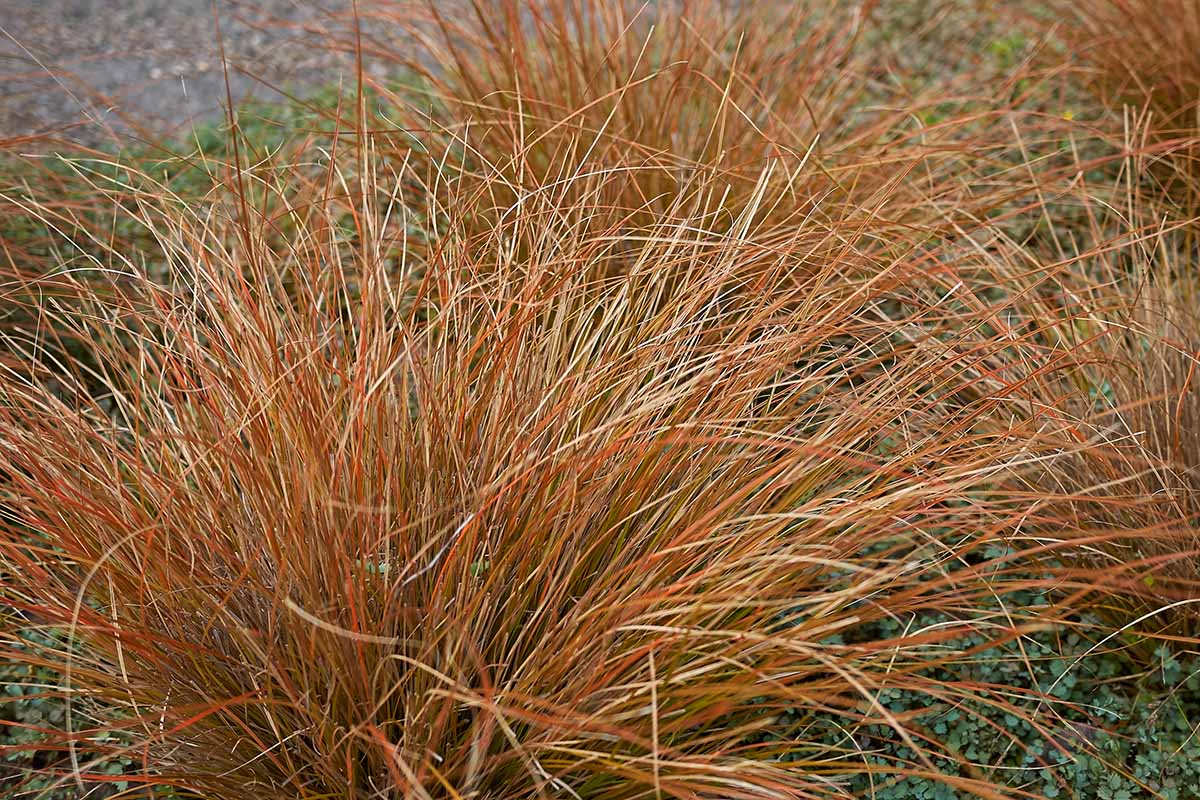
With a mounding growth habit, this species is hardy in Zones 6 to 9.
This species thrives in moist soil but don’t let it become waterlogged during the winter dormant season. This will cause the roots to rot.
10. Old Gold
In Zones 5 to 10, this New Zealand type (C. testacea) shows off with semi-evergreen bronze leaves that mature to deep golden-yellow, with brown flowers in the spring.
If you prefer the bronze, just give the plant a haircut now and then and new leaves will emerge in this color.
This plant has a clumping growth habit and stays compact with an 18-inch height and 12-inch spread. Grow in partial sun to full shade and moist to moderately dry soil.
11. Pennsylvania
Pennsylvania sedge (C. pensylvanica) is a North American native that makes an excellent grass lawn replacement. It never grows taller than eight inches and has a creeping growth habit – that means no mowing unless you want a shorter look.
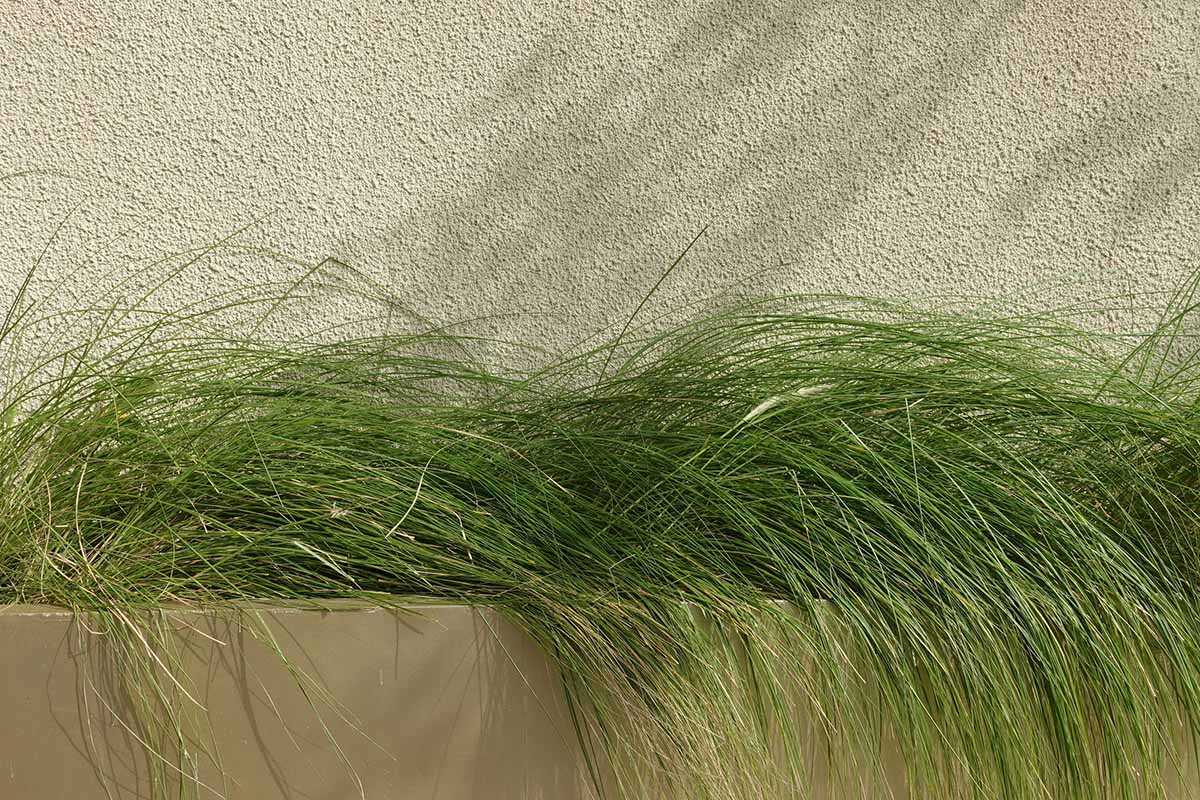
The narrow green foliage forms a lush ground cover, spreading via rhizomes.
It grows in partial to full shade, so it’s ideal if you have shady spots in your yard where regular grass won’t grow.
Head on over to Nature Hills Nursery for a plant in a #1 container to start a gorgeous lawn alternative in Zones 3 to 8.
12. Prairie Fire
C. pensylvanica ‘Prairie Fire’ lives up to its name. The main part of the foliage is bronze and green with fiery orange at the tips. It’s semi-evergreen and does well in Zones 6 to 10.
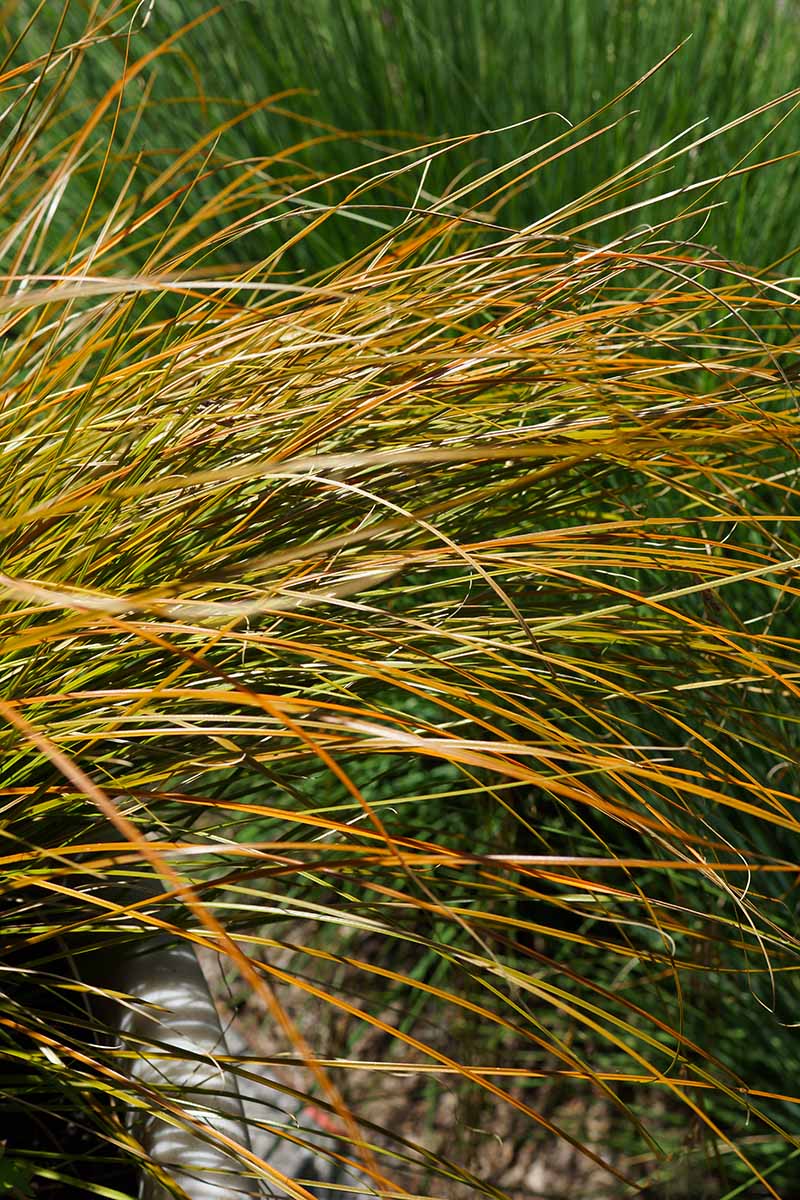
One of the cold-hardiest New Zealand types, it grows in clumps up to 24 inches tall and wide for an impressive display.
Plant it anywhere in partial sun to full shade with moderately moist soil.
Add some fire to your garden by heading to Fast Growing Trees.
13. Ribbon Falls
Look no further than the C. oshimensis hybrid ‘Ribbon Falls’ if you need something more heat tolerant and sun-loving than most Carex options. Though it prefers partial shade, it’s extremely versatile and tolerant of a range of conditions.
With deep green foliage, ‘Ribbon Falls’ maintains a compact, clumping habit reaching 18 inches tall and wide, and is a reliable, fast grower without becoming invasive.
Hardy in Zones 5 to 9, it’s particularly well-suited to container growing thanks to its fountain-like growth, though you shouldn’t grow it in a pot below Zone 6.
There’s a lot to love about this sedge, and if you agree, you can nab one for yourself at Nature Hills Nursery in a #1 container.
14. Seersucker
You may not see people in seersucker suits that often anymore, but C. plantaginea ‘Seersucker’ is all the rage.
It’s an adaptable North American native that can grow in anything from boggy to dry soil and full shade to partial sun. It has extremely wide leaves for a sedge and grows in foot-tall and equally wide clumps of shiny, lime green leaves.
It really stands out, however, when the unusual flowers emerge in the spring. That’s when you get to see this plant dressed up in its seersucker finest.
The flowers are brown and cream-striped with a striking oval shape. If you live in Zones 4 to 9, you’re lucky enough to be able to grow this standout.
15. Silk Tassel
A beautiful Japanese type, C. morrowii ‘Silk Tassel’ is easy to grow and has a pleasing clumping growth habit that keeps it compact and under control.
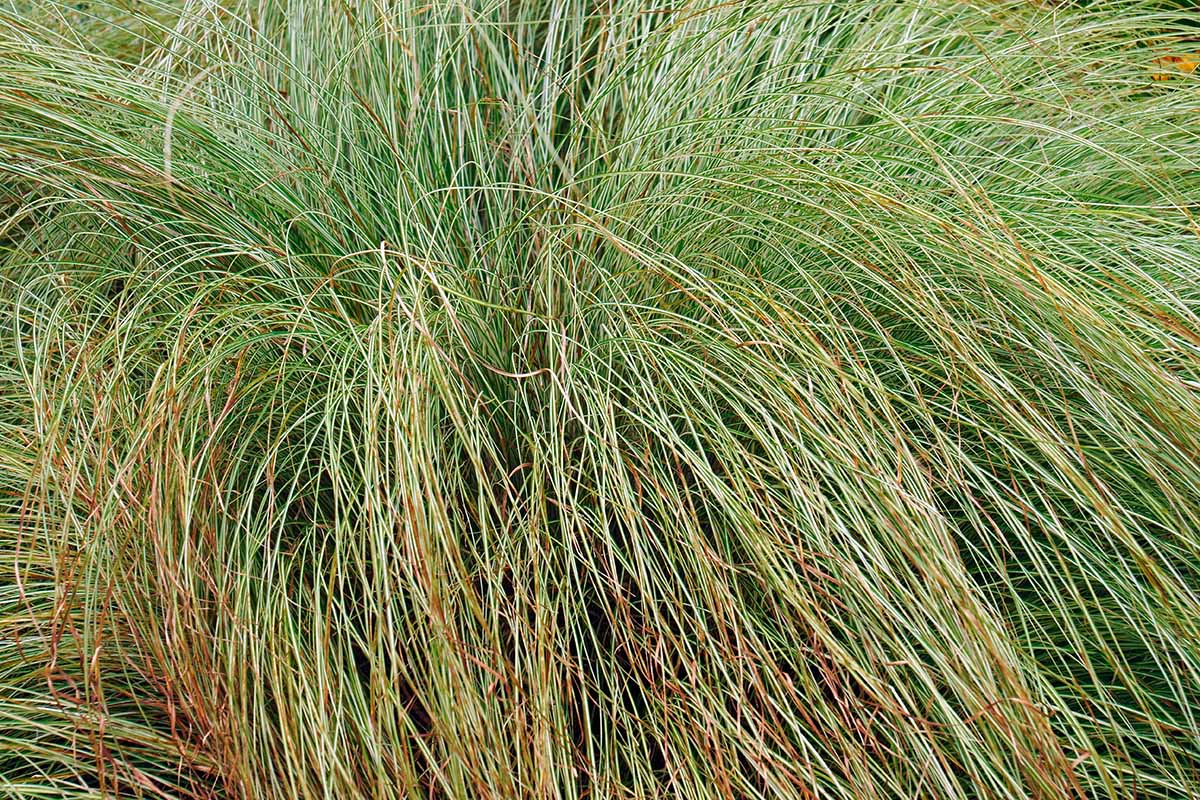
The narrow, wispy leaves are just an eighth of an inch wide. These are silvery-white and green striped and glitter subtly as they rustle in the wind.
This cultivar is a moist soil and shade lover, though it will fare just fine in partial or even full sun in cooler climates.
It stays extremely petite at under a foot tall, but can spread up to two feet, and it’s suitable for climates down to Zone 4 and up to Zone 9.
True Sedges Are Truly Fantastic
They may not have massive, colorful flowers or offer up big old fruits and vegetables, but sedges are pretty great.
They can provide semi-evergreen color for just about any spot in the yard and they don’t ask for much in return. Plus, they’re far more varied than many people realize.

Which type on this list are you thinking of taking home? Let us know in the comments section below.
And if you can’t get enough of grass-like plants, we have some other guides that you might find interesting, including:


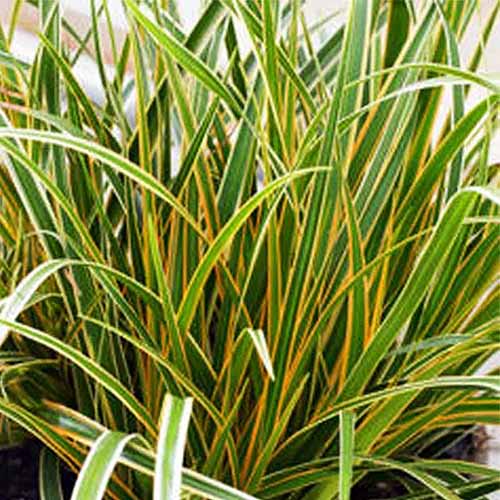
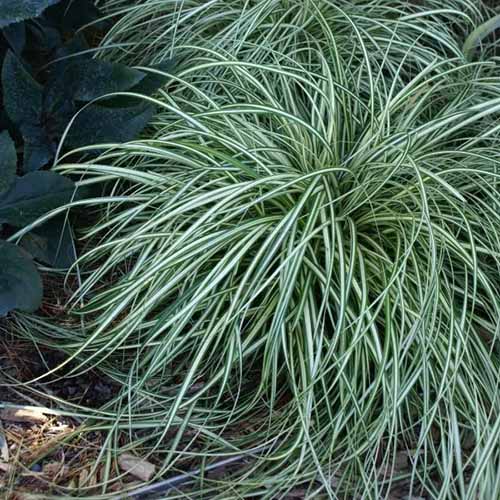

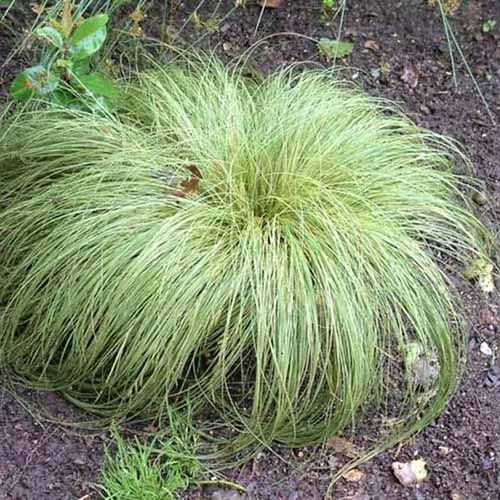

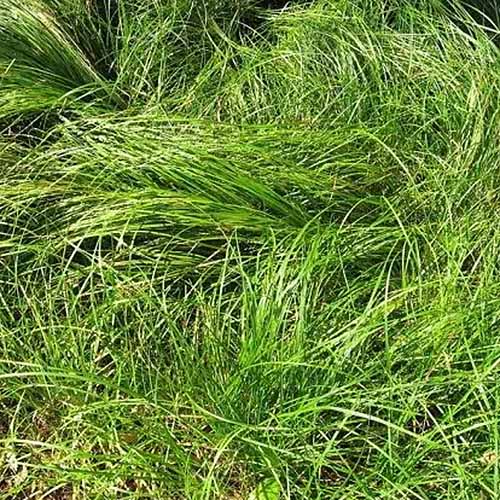
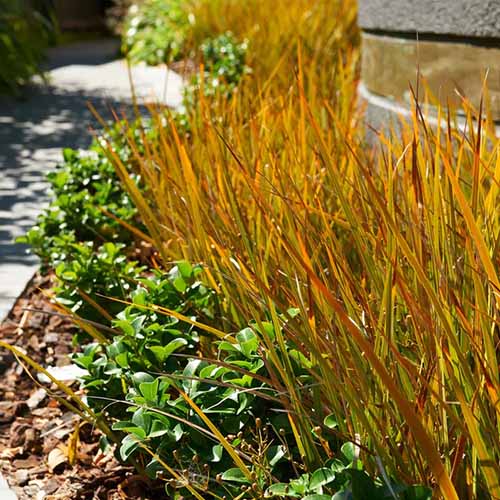

Your pages are very useful for me to recognize planted foreign sedges in Hungarian parks! Thanks for your contribution on cultivated sedge species and varieties!
Looking for Pennsylvania or Appalachian Sedge seeds. Feels like the holy grail.Haha. Any advice?..or any sedge that would be happy in Zone 5a-5b, dry shade. I have a large (30 ft x 4 ft) to plant so need seeds not potted plants which would bankrupt me!
Hi Linda, try Prairie Moon Nursery. In addition to the ones you mentioned, look for oak sedge (Carex albicans) or palm sedge (C. muskingumensis). Both would work for your area.